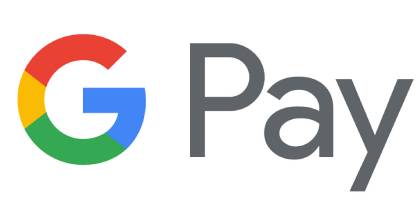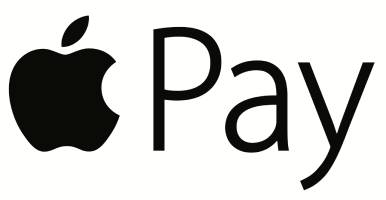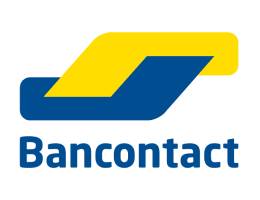Previous
Revolutionizing Comedy Club & Bar Customer Experience: Monkey Barrel’s Success Story
In today’s ever-evolving restaurant industry, the choice of a payment service provider has become a pivotal factor in achieving and sustaining success. Gone are the days of cash-only transactions; customers now demand transparent and secure digital payment options.
Join us in this article as we delve into various payment solutions and emerging trends to ensure that your restaurant’s choice not only enhances its success but also boosts customer satisfaction.
A payment provider, also referred to as a payment processor, constitutes a fundamental element of contemporary commerce. It serves as the conduit for the exchange of funds between buyers and sellers in both physical and online transactions. These providers occupy a central role in enabling companies, including restaurants, to accept payments from customers, oversee financial transactions, and ensure the security and reliability of these processes. Payment providers offer a range of payment collection methods, including credit cards, debit cards, digital wallets, bank transfers, and even cryptocurrencies, all of which offer secure avenues for transmitting payment information from customers to merchants.
Once initiated, the payment service provider undertakes a series of actions: they verify the availability of funds and validate the transaction’s legitimacy with the customer’s bank, transfer the funds to the merchant’s account, settle transactions by transferring funds, and uphold stringent security and compliance measures. Moreover, payment service providers maintain meticulous transaction records, provide customer support for matters like chargebacks and disputes, and significantly contribute to building customer loyalty. In essence, payment service providers are indispensable intermediaries in the dynamic financial transactions that underpin today’s global economy.
A restaurant, like any other business, benefits greatly from the services of payment service providers. This is necessary for a number of compelling reasons. here are several compelling reasons for this necessity.
Firstly, payment service providers empower restaurants to offer a wide array of payment options to their patrons. Beyond cash, customers now anticipate the convenience of paying with credit cards, debit cards, mobile wallets, and even contactless methods. By embracing these choices, restaurants can expand their customer base and enhance the overall dining experience.
Payment service providers also streamline the payment process, rendering transactions faster and more efficient. This feature holds particular importance in the restaurant sector, where speed and convenience are pivotal to customer satisfaction. Swift and hassle-free checkout reduces diners’ waiting times, thus elevating their overall dining experience.
Furthermore, payment service providers play a significant role in both physical and digital card payments. While most restaurants already employ a payment provider for their physical payment terminals, they can choose the same provider or a different one for their digital ordering process, offering flexibility and continuity across various transaction channels.
Payment providers typically offer a wide range of payment methods to cater to the diverse preferences of consumers and businesses in the region. These payment methods are designed to facilitate secure and convenient transactions, both online and offline.
In this section we focus on some common payment methods that payment providers commonly support in Europe:
Credit cards, such as Visa and Mastercard, are globally recognized and widely accepted payment methods that offer convenience and security for both online and offline transactions.

They enable consumers to make purchases by borrowing money from the issuing bank, and payments can be made over time or in full, depending on the cardholder’s choice. Visa and Mastercard are known for their extensive international reach, making them popular choices for cross-border payments and travel-related expenses.
Digital wallets like Google Pay, Apple Pay, and Microsoft Pay have revolutionized the way we make payments. These mobile wallet apps allow users to securely store their credit card or bank account information on their smartphones or devices.



Users can then make contactless, in-app, or online payments by simply tapping their device or entering a PIN or biometric verification. These wallets are known for their speed, convenience, and enhanced security features like tokenization, which replaces sensitive card data with a unique token, reducing the risk of fraud.
PayPal is a globally recognized online payment platform that allows individuals and businesses to send and receive money securely over the internet.

Users can link their PayPal accounts to their bank accounts, credit cards, or debit cards, making it a versatile and widely accepted payment option for online shopping and digital transactions. Additionally, PayPal.me is a feature that simplifies requesting payments from friends, family, or clients by generating a personalized payment link, streamlining the payment process and reducing the need for sharing financial details
In addition to global payment options, local payment methods like iDEAL in the Netherlands and Bancontact in Belgium cater to specific regional preferences. iDEAL is an online banking payment method that allows Dutch consumers to make secure payments directly from their bank accounts. Similarly, Bancontact is a popular debit card payment method in Belgium, offering seamless and trusted transactions for both online and in-store purchases. These local methods are often integrated by businesses to accommodate the payment preferences of customers in these respective countries, ensuring a tailored and familiar payment experience.


When choosing a payment provider, a restaurant should prioritize factors such as the variety of payment methods, transparent fee structure, strong security and compliance measures, seamless integration with the payment system. By considering the important factors explained below, restaurants can choose the payment service provider that best meets their operational and customer service requirements.
Arguably one of the most crucial considerations for restaurants, the transaction fee structure can significantly impact the bottom line. Transaction fees, typically composed of a percentage of the transaction amount plus a fixed amount per transaction, vary among payment providers and hold substantial implications for financial planning. The significance lies in the direct correlation between transaction fees and a restaurant’s profitability. Higher fees can erode margins, especially for establishments processing a high volume of transactions. Conversely, lower fees can lead to substantial cost savings over time. For restaurants operating within tight budgets or striving to maintain competitive pricing, minimizing transaction costs can offer a strategic edge.
A diverse array of payment methods is essential for restaurants, ensuring that customers can pay in the manner most convenient to them. This includes traditional options like credit cards and debit cards, as well as modern methods such as mobile wallets and digital payment apps. Restaurants should prioritize providers that can accommodate a broad spectrum of payment preferences. In particular, digital wallets have become almost indispensable, ensuring that customers can seamlessly complete transactions. This variety not only enhances convenience but also elevates customer satisfaction and conversion rates for orders.
Transparency in pricing is paramount when choosing a payment service provider. Restaurants must have a clear understanding of the costs associated with the service, encompassing transaction fees, monthly charges, and any additional fees for services like chargebacks or refunds. A transparent fee structure empowers restaurants to manage their finances effectively, avoid unforeseen costs, and make informed decisions regarding their payment operations.
In the realm of payment processing, security is paramount, especially for restaurants that handle sensitive customer data. Reputable payment providers employ robust security measures, encompassing data encryption, advanced fraud detection systems, and compliance with industry standards like PCI DSS (Payment Card Industry Data Security Standard). These measures not only safeguard customer information but also protect restaurants from potential data breaches and financial losses.
Seamless integration is key to streamlining the payment process for restaurants. It pertains to how well a payment provider’s technology integrates with a restaurant’s existing online ordering or point-of-sale (POS) system. Opting for a provider with straightforward integration capabilities enhances billing efficiency, reduces manual data entry errors, and boosts overall operational effectiveness. Restaurants can save both time and resources by selecting a payment service that seamlessly syncs with their existing infrastructure.
For the sake of simplicity and efficiency, restaurants should consider the possibility of using the same payment provider for both their digital and physical transactions. This approach minimizes the administrative burden of consolidating and reconciling funds received from online and in-store purchases. For instance, you may choose to stick with the payment provider you already use to accept card payments through your in-store card machine. This way, all funds conveniently flow into the same account, reducing complexity in financial management.
Efficiency in receiving funds is a critical aspect to consider. Restaurants should assess how quickly funds are deposited into their accounts and any additional fees associated with payouts. This becomes especially vital for restaurants where cash flow is crucial and a frequent payout schedule is desired, such as daily settlements without incurring extra transaction fees. Payment providers offering same-day settlement options are often preferred in such cases, ensuring financial flexibility and agility for restaurant operations.
A vital aspect to evaluate when selecting a payment provider is the quality of their customer support. Exceptional customer support can make a significant difference when dealing with payment issues, technical glitches, or general inquiries. Restaurants should look for providers that offer responsive customer service channels, such as phone support, live chat, or email assistance. Availability during peak dining hours and weekends can be particularly beneficial for restaurants, as it ensures assistance when it’s needed most. Additionally, consider whether the provider offers comprehensive training and resources to help restaurant staff navigate payment systems effectively, reducing the potential for errors and improving the overall customer experience.
The ease of onboarding onto a payment provider’s platform is another critical factor for restaurants to consider. A straightforward onboarding process minimizes disruptions and allows the restaurant to start accepting payments quickly. Look for payment providers that offer user-friendly onboarding tools and clear instructions. The ability to seamlessly integrate with existing point-of-sale (POS) systems or online ordering platforms can significantly streamline the onboarding process. Restaurants should also assess whether the provider offers dedicated onboarding support or account setup assistance to ensure a smooth transition and minimize any learning curve for staff.
A seamless and user-friendly payment checkout flow is paramount to enhancing the overall dining experience in a restaurant. When evaluating payment providers, restaurants should prioritize those that offer an intuitive and efficient checkout process, ensuring customers can effortlessly input required information, select their preferred payment method, and benefit from the option to securely save payment details for future purchases. Clear form fields, real-time validation, and a visually appealing, branded payment interface create a sense of control, trust, and convenience, contributing to customer satisfaction, loyalty, and repeat business.
GonnaOrder provides choices that empower businesses in the hospitality and retail industry. Unlike inflexible solutions that limit you to a single payment provider, we offer the freedom to select from a variety of payment solutions tailored to your unique needs. We continuously expand our portfolio of payment providers to ensure that you can align your payment methods with your customers’ preferences.
Our vision is to revolutionize the ordering software landscape by providing affordable solutions that allow entrepreneurs to focus on their core business strengths. GonnaOrder aims to enhance operational efficiency and customer satisfaction for hospitality businesses by integrating with various payment providers. By offering multiple payment options, we empower businesses to select the most suitable provider for their preferences and regional availability. This approach acknowledges the distinct advantages and terms associated with different payment solutions, ensuring that GonnaOrder remains a flexible and accommodating choice for your payment needs. Ultimately, our commitment to choices reflects our dedication to your business’s success and your customers’ convenience.
In summary, payment service providers play a pivotal role in the restaurant industry by facilitating secure and versatile payment solutions, enhancing operational efficiency, and elevating overall customer satisfaction. When selecting a payment provider, it’s essential to consider critical factors such as the range of supported payment methods, fee structures, security measures, integration capabilities, customer support or payment schedules. By carefully evaluating these aspects, restaurants can optimize both their financial performance and the quality of the customer experience.
At GonnaOrder, we take pride in being the first payment provider-agnostic platform in the hospitality industry. We empower you with the freedom to choose the payment provider that best aligns with your unique business requirements. Our intention is not to bind you to a specific provider but to offer you the opportunity to assess and select the most suitable options available in your region. This commitment to choice underscores our dedication to your restaurant’s success and operational flexibility.
Give your customers an easy and fast way to order and pay from everywhere. Increase your revenue and make your restaurant operations efficient.